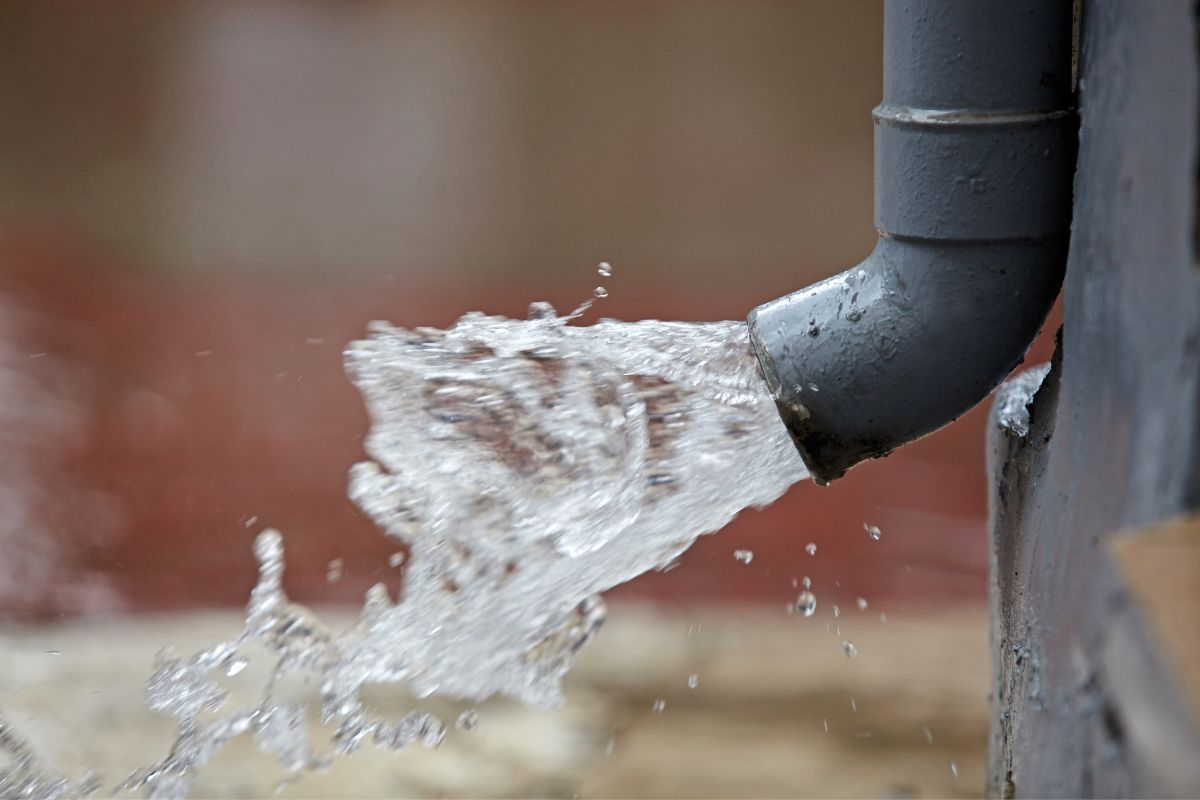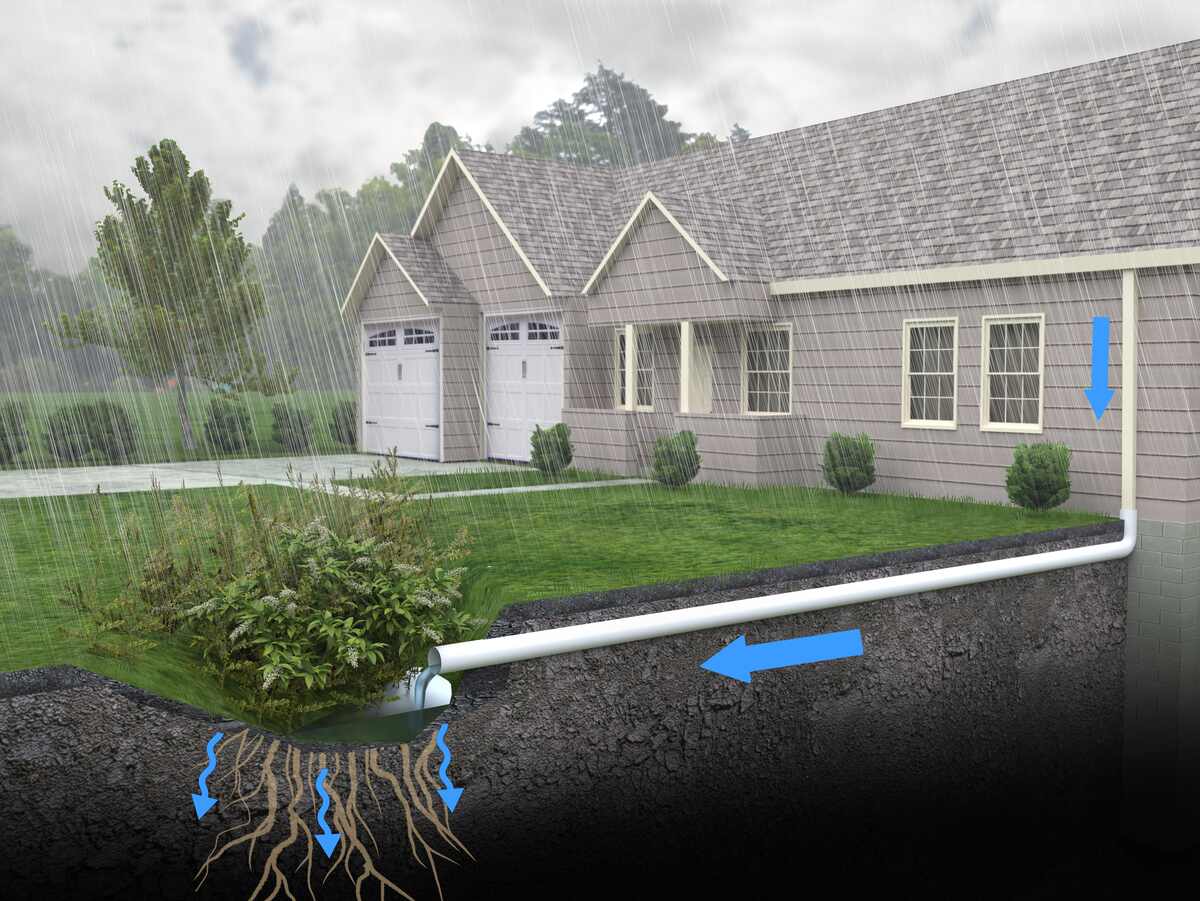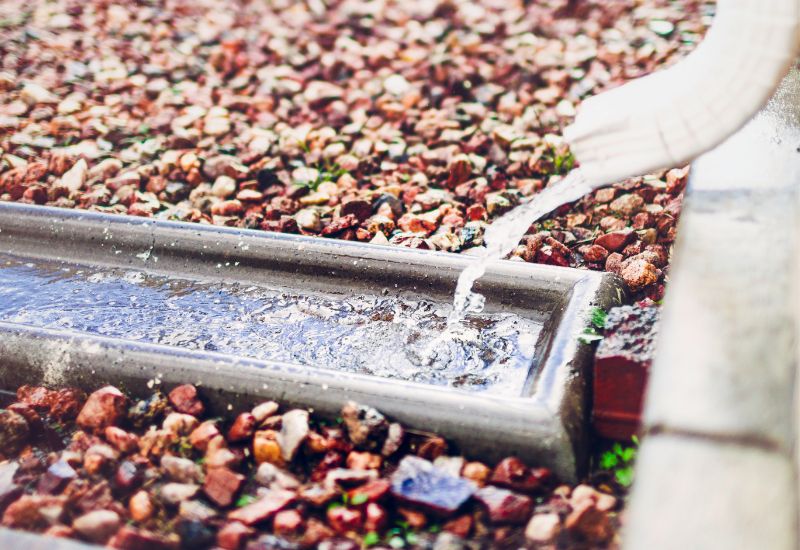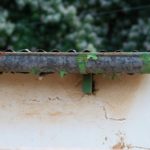
Gutters and downspouts protect your home’s foundation and exterior from water damage by directing runoff away from your property. But where exactly is this water supposed to go? Let’s find out where you can direct water from your gutters and downspouts and all the safe ways to do it.
In this article:
- Why Do You Need to Direct Water Away?
- Where Should You Direct Water?
- Ways to Redirect Rainwater Away
- FAQ About Gutters
- When to Hire a Gutter Pro
Why Do You Need to Direct Water Away From Your House?

Water is a powerful force of nature that, if not harnessed, can cause numerous problems for homeowners. Your roof shingles guide rainwater into the gutter, while the downspouts release it somewhere on the ground. This water should be channeled as far from your home’s foundation as possible.
If the water isn’t directed far enough away from your home, it could pool around the foundation or even find its way into the basement or infiltrate the siding. Here’s all that could happen if your gutter system fails to drive water away from your property:
- Water starts to pool around your home and saturates the soil. This puts intense hydrostatic pressure on the concrete around the foundation and causes it to settle unnaturally. The foundation expands and contracts, especially when the temperature dips and water freezes. It weakens your home’s base and gives birth to numerous other structural problems.
- Water stains in the basement, large cracks on the concrete patio or foundation, mold, rust and maybe flooding in the crawl spaces are some common issues that will develop indoors due to poor water drainage.
- If water isn’t directed far enough from your house, it ends up pooling in the yard or garden. This will result in lots of pests, mosquitoes, and unwanted rodents around your property.
- Soil erosion all around your landscape.
Where Should You Direct Water From Your Gutters and Downspouts?

Gutters and downspouts perform one of the most important jobs for your house: They catch rainwater and channel it away from the roof and house. And where does this water go?
Here are a few safe places you can direct your downspouts to drain rainwater:
A Rain Barrel
This is an ideal choice if you’re an environmentally conscious person. It is also the easiest way to properly drain water from your roof. To install, you simply have to attach a diverter to the edge of your downspouts and point it to the barrel underneath. The downspout will securely deliver runoff from the roof into the barrel without any splashes or potential flooding.
Rain barrels come in different sizes and materials. You can choose one according to your needs, from 30 to 100 gallons made out of wood or plastic.
The barrel can either be placed below or above the ground, depending on your preference. It will catch all the rainwater which you can later repurpose to feed your garden, for cleaning, or for use in a dry spell.
A Drainage Pit
This method is for those who don’t like anything interfering with their home’s curb appeal. Drainage pits effectively and safely redirect water away from your home. They have a low-profile design that hugs the ground and doesn’t intrude on your home’s appearance in any way.
Drainage pits are also known as drainage wells, dry wells, or soakaway wells. They are a cost-effective solution to store large volumes of water.
To build one, excavate a part of your yard or ground, typically 3 feet wide and 3 feet deep. Partially fill it with polished stone or gravel and fix a drain pipe that brings in the rainwater.
There are a few general conditions for drainage well installation:
- The pit should be at least 10 feet away from the foundation wall.
- The bottom of the drainage pit should be above the groundwater level.
- You need to adjust the dimensions of the pit according to the volume of water that usually exits from the downspouts.
Note: Please check and confirm the local regulations to avoid any penalties as almost all local authorities have laws regarding excavating such pits.
Rainwater Collection System
Another way to safely direct water away from your house is to install big, underground tanks. These tanks collect water coming from your rain gutters and downspouts and are linked to a filter and a pump. You can later pump out water as needed and direct it to the desired areas of your garden or yard.
This system especially comes in handy for irrigation systems in a home garden. Also, these rain collecting systems might need a professional’s expertise for proper installation because they are slightly complicated to set up.
How Do You Redirect Water Away From Your House?
Here are a few ways to redirect rainwater from your gutters away from your home:
Buried Drainpipes
One of the neatest ways to direct water away from your home and yard is to bury your downspouts. These buried downspouts connect to underground drain pipes that release water at a safe distance from your home and yard. It might seem like a lot of work to dig a trench across the yard, lay in the drain pipes, and refill it, but it is worth it.
The drain pipes are typically made of PVC and effectively carry water coming from the roof at least 5-10 feet away from your home.
Rain Gardens
Rain gardens are small depressions in your landscape or a natural slope that collect rainwater and soak in all its planted shrubs, flowers, and perennials. The reabsorption of water by the soil is good for the environment and is great for directing runoff away from your foundation.
Roll-Out Drain Sleeves
Drain sleeves are DIY drainage filters that attach to the base of your gutter. When stormwater from the roof gushes down onto them through the gutter, they automatically roll out and drain the water away from the foundation.
And when the rain stops and the sleeve dries out, it folds back in. Roll-out drain sleeves also help to prevent debris buildup and clogged pipes.
Downspout Extensions
Downspout extensions slip onto the bottom of downspouts and jut out into the yard to carry water a safe distance from the home. Some of them already have an elbow-like end, while others might not have it. If yours doesn’t have one, simply attach an aluminum elbow before you place a downspout extension so that it directs water away from the foundation.
The extension releases water wherever you direct it, such as the yard, a drain, the driveway, or the street. Ensure that you keep the elbows and extensions clean as they’re prone to clogs.
Splash Blocks
Splash blocks are rectangular pieces of concrete or plastic that you place underneath the end of a downspout. They funnel water coming from the downspout away from the house’s foundation. It’s a temporary solution because harsh weather conditions can easily move them, but they work great at keeping basements and crawl spaces free from moisture under normal rainy conditions.
Stealth Flow Connectors
A stealth flow connector is attached at the edge of your downspout and is made for yards with landscape or mulch. It is a plastic (PVC) connector that sits very low and is hardly visible from a distance. When tucked away in mulch or landscape design, it blends in perfectly.
It stays above ground and connects to drain pipes that lead water away from the yard.
French Drains
Another effective method of controlling and redirecting water flow around your property is to install French drains. They are perforated pipes that channel runoff from the roof in a specific direction.
Generally, these pipes are covered with gravel and rocks to make sure that they stay in place. The rocks also help with filtration and water flow.
Storm Drains
You can tie your downspout with a storm drain and lead it to drain water into the street or driveway. Make sure you don’t release water in an area with high foot traffic.
FAQ About Gutters
Yes, gravel-covered paths are highly effective at redirecting water around your property because water drains quickly through gravel. Gravel paths also reduce the risk of water pools and soil erosion around your house.
Water coming from the gutters should be directed at least 4-6 feet away from your house. And if your home has a basement, the distance should at least be 6 feet. Simply put, the farther water drains from your house, the better.
Yes, buried downspouts seamlessly carry water away from your house. They’re highly effective, especially if you reside in an area that experiences rain often or if your lawn tends to hold water in uneven places.
When to Hire a Gutter Pro
Water collection systems not only save your home from water damage, but they also benefit the environment. However, keep in mind that these systems and hacks work only when your gutters and downspouts are functioning in good condition. So if you need help laying down one of these water management systems or maintaining your gutters, find a gutter pro near you.
Main Photo by: Εικόνες του χρήστη Marinos Karafyllidis | Canva Pro





